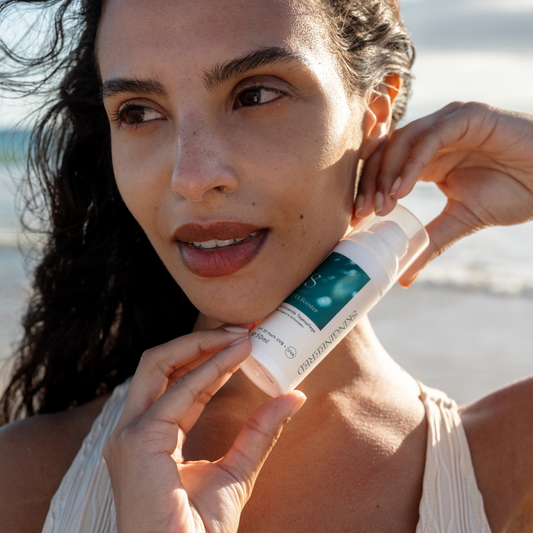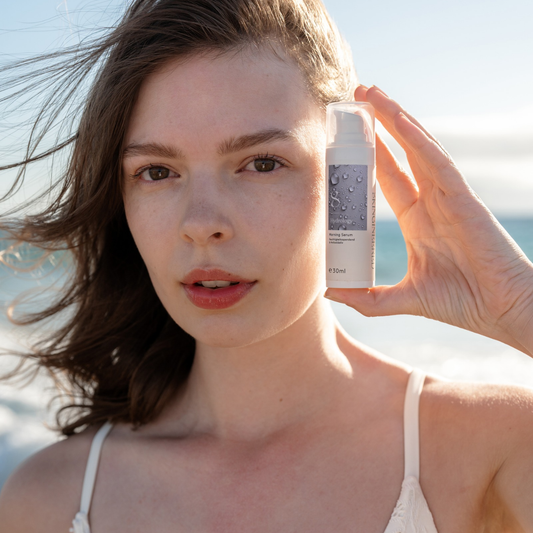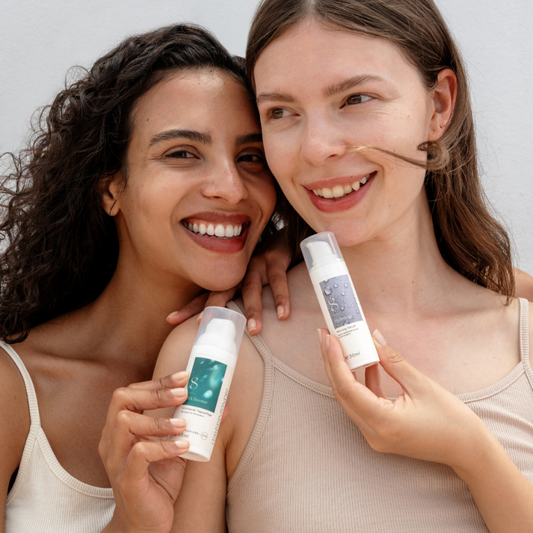Do you wear sunscreen daily? Or do you base your sunscreen on the UV index? The World Health Organization (WHO) has created the Ultraviolet Index (UVI) , an internationally recognized measure to better prevent UV-related skin damage—especially skin cancer.
Contents
- What does the UVI tell us?
- How is it calculated?
- When should you use sun protection?
- Where can I find the UVI?
- UVI during the day
What does the UVI tell us?
The UV index describes the sun's radiation exposure on the Earth's surface. UVB rays are given greater weight than UVA rays , as they play a significant role in the development of skin cancer.
Sun protection is recommended for UV indexes of 3 and above . In Germany, it reaches values of 8 to 10 in summer, and is usually below 2 in winter.
The scale typically ranges from 1 (low) to 11+ (extreme) – but is open-ended. Peak values of up to 43.3 have been measured at the equator or at high altitudes (e.g., the Andes) (December 29, 2003).

Source: Federal Office for Radiation Protection
How is the UV index calculated?

You don't need to understand this formula in detail. It's important to understand: The higher the UVI, the higher the risk of skin damage. This elongated S (integral) means that the value is summed over several dimensions. These dimensions are:
- Radiation intensity: The electromagnetic energy is measured on a defined horizontal surface.
- Wavelength: Shortwave radiation (UVB) is given greater weight than longwave radiation (UVA, visible light).
In addition, there are:
- Factor: To obtain handy numbers (approx. 1 to 15), this value is divided by 25 mW/m² at the end.
- Time: The UV index refers to the highest 30-minute average of the day
When should you use sun protection?
The UV index is a practical guide for the general population. However, we should also consider individual skin types and any predisposition to hyperpigmentation, rosacea, photoallergies, etc. Sunscreens also have various cosmetic benefits.
From a medical perspective, sun protection isn't absolutely necessary in winter. However, there are good reasons to use it anyway:
- In case of strong UV reflection, e.g. when skiing
- For the prevention of acne scars after healed blemishes
- After cosmetic treatments that make the skin more sensitive to light (e.g. laser, peelings)
- For photosensitive skin caused by medication (e.g. some antibiotics or antidepressants)
- During pregnancy there is an increased susceptibility to hyperpigmentation
- To prevent premature skin aging due to photo-aging
Where can I find the UV index:
You can check it out, for example, at the German Weather Service .
As a widget on the home screen, I recommend the app UVLens .
The Skin Cancer Information Portal provides instructions for the iPhone’s own function.
Nerd toy: UV sensor from Ajuma (10% off with code: ying10)

Different sources are sometimes used for the forecast. European models may have a lower local resolution in the Americas, and vice versa. Some also display data from nearby measuring stations as real-time data becomes available.
But whether the forecast indicates a UV index of 5 or 8, you should avoid the midday sun in all cases.
UV index throughout the day

The UV index is not evenly distributed throughout the day. In summer, it's recommended to use sunscreen between 9 a.m. and 5 p.m. Direct sunlight should be avoided as much as possible between 11 a.m. and 3 p.m. If you leave the house late in the evening, you don't necessarily need to reapply sunscreen, even if it's still very light.
UV index and temperature

Don't let the temperature fool you. Even if it might still be cool at 10 a.m., the UV index can already be high! While the UV index is fairly symmetrical around the sun's peak, the temperature peaks more often in the late afternoon. If you want to enjoy the sun and warmth, you can still lie in the garden at 8 p.m. Without the risk of sunburn!
UV index and UVA

The UV index gives UVB rays a much higher weighting than UVA rays. The UVA spectrum accounts for less than 0.15% of the UV index. Nevertheless, it contributes to long-term skin damage and accounts for 90% of UV radiation. The intensity of UVA rays is somewhat less dependent on the position of the sun, and the curve is therefore somewhat broader than the UV index.
Read more in the blog article " What is the difference between UVB and UVA? "
Conclusion
The UV index is a helpful guide, but it is not a substitute for an individual risk profile . Those who want to protect their skin long-term should view sun protection not as a seasonal measure, but as part of their daily skincare routine .
Products like the Skingineered UVA Booster provide just that: effective UVA and UVB protection, formulated for everyday use: without the sunscreen feel, gentle on the skin, with scientific precision.
Sun protection is not a requirement – but an act of informed self-care.
Your Ying
Engineer, Cosmetic Scientist and Founder of Skingineered












